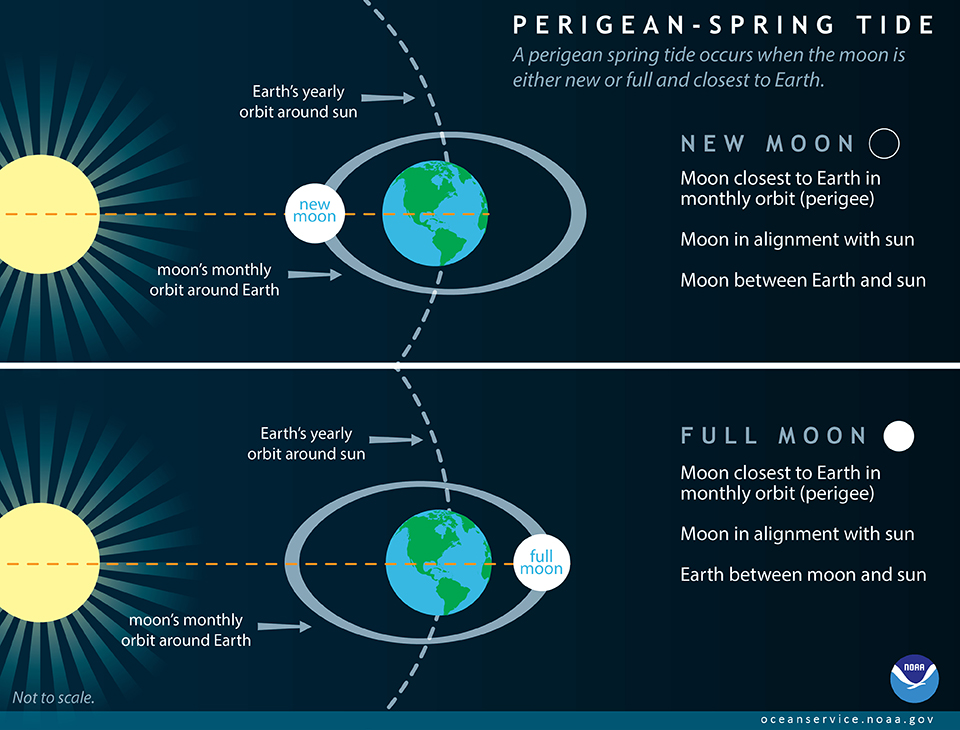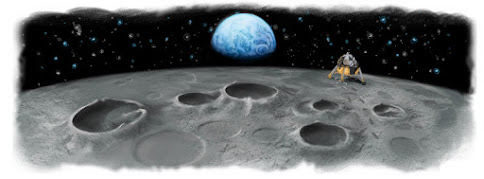Image via EarthView
What a moment of the year! Ah, summer! The season of pleasure. Surfing, swimming, travelling, relaxing, and lazy days. And meteor showers and supermoon? Wow!
Today, 31 July the new moon will bear the name Black Moon, and it’ll be a supermoon. You won’t see it, though. Like all new moons, it’ll cross the sky with the sun during the day.
If you have seen a shooting star last Sunday or Monday, the chances were that it came from the direction of the constellation of Delta Aquarius, the Water Bearer.
The Delta Aquariids are active beginning in mid-July and are visible until late-August. These faint meteors are difficult to spot, and if there is a moon you will not be able to view them. If the moon is not present, your best chance to see the Delta Aquariids is when meteor rates rise during the shower's peak at the end of July.
If you were unable to view the Delta Aquariids during their peak, look for them again during the Perseids in August: You will know that you have spotted a Delta Aquarid if the meteor is coming from the direction of the constellation Aquarius—its radiant will be in the southern part of the sky. The Perseid radiant is in the northern part of the sky.
via The Old Farmer Almanach
What's a Black Moon?
So you've heard of a blood moon, and maybe even a blue moon, but what about a black moon?
Like Blood Moon and Blue Moon, Black Moon is not an astronomical term. In fact, if you ask an astronomer, professional and amateur, very few will have even heard of it. It’s not even a particularly widely known folklore thing.
Like Blood Moon and Blue Moon, Black Moon is not an astronomical term. In fact, if you ask an astronomer, professional and amateur, very few will have even heard of it. It’s not even a particularly widely known folklore thing.
The phenomenon is occurring again in North America on July 31 - the first one since 2016. The rest of the world will have to wait until August 30.
But, what does this even mean? Why is it important? Here's everything you need to know about this celestial event:
A black moon is basically the second new moon of the month, something that rarely occurs. It works similarly to a Leap Year. A lunar cycle typically takes about 29 days to complete, but our months are slightly longer. So sometimes, about every 32 months, we happen to get two full moons or two new moons.
The second full moon in a month is called a blue moon, and the second new moon is called a black moon.
But a black moon also refers to a month where there are no new moons - which is only possible in February because of its fewer days. This is less common than the other type of black moon, and occurs about once a decade.
What we will see during a Black Moon?
Uh, not much. Like all new moons, it travels across the sky with the sun during the day. Humans can’t see the new Moon in the Sun’s glare.
A new Moon is practically invisible to the naked eye, so there’s nothing to see during a so-called Black Moon.
What we will see during a Black Moon?
Uh, not much. Like all new moons, it travels across the sky with the sun during the day. Humans can’t see the new Moon in the Sun’s glare.
A new Moon is practically invisible to the naked eye, so there’s nothing to see during a so-called Black Moon.
But the gravitational influence of the new moon and sun combine to physically affect our water planet, which people along the ocean coastlines may notice in the coming days.
Moreover, this new moon is a supermoon, that is, a new moon happening in close conjunction with lunar perigee – the moon’s closest point to Earth in its monthly orbit.
image via Physical Geographic
Don’t listen to curmudgeon-y old astronomers telling you supermoons are 'hype'. Supermoons aren’t hype; the name has arisen from folklore, like Blue Moon or Black Moon or the beloved Harvest Moon. Remember Neil Young!
"Because I'm still in love with you
I want to see you dance again
Because I'm still in love with you
On this harvest moon."
"Because I'm still in love with you
I want to see you dance again
Because I'm still in love with you
On this harvest moon."
Neil Young, Harvest Moon
When to see?
The new moon falls on August 1, 2019, at 03:12 UTC; that is, July 31 at 23:12 p.m. EDT. For some parts of the world, then, this will be the second new moon of July, and thus some will called it a Black Moon. It’s also a supermoon. Following this new moon, you’ll likely see the young crescent moon again – in the west after sunset – in early August.
Expect to see the moon next in the western evening sky after sunset. You might see it as soon as August 2, for example.
Astrology:
The American astrologer Richard Nolle is credited for coining the word supermoon. That’s probably one reason some astronomers object to it, although others embrace it as a simpler and catchier name than perigean new or full moon, which is what we called these moons before the term supermoon came along. Nolle defined a supermoon as:
"… a new moon or full moon at or near (within 90 percent) of its closest approach to earth in a given orbit."
The moon in its orbit comes closest to Earth at perigee and swings farthest from Earth at apogee. At apogee, the moon is at 0 percent of its closest distance to Earth; and at perigee, it’s at 100 percent of its closest distance to Earth. A new or full moon aligning with perigee is about 30,000 miles (50,000 km) closer to Earth than a new or full moon aligning with apogee.
Education
Oh, my ! It should offer some pretty photo opportunities for sky watchers. Ask students to take some photos if they are lucky or capture small videos (some seconds) with their smartphones and tablets to explore in Science classroom next week or after school holidays.
Guess what? The year’s farthest and smallest full moon (micro-moon) will occur on September 14, 2019, exactly one fortnight after the new moon supermoon of August 30 and one fortnight before the new moon supermoon of September 28, 2019.
In fact, the July 31-August 1, 2019, new moon will present the first in a series of three straight new moon supermoons, to fall (by Universal Time) on August 1, August 30, and September 28.
After Summer holiday, teachers and students will discuss their experiences and knowledge about summer solstice and Strawberry Moon. I'm sure!
Curricula: Cross-curricular: Geography; History; Sciences; Languages & Literature (traditions, poetry, prose)
Level : All levels.
Teachers must consider the activities to every level or curriculum they are teaching.
31.07.2019
Copyright © 2019G-Souto'sBlog, gsouto-digitalteacher.blogspot.com®

Science education : Don't miss the Black Moon : resources G-Souto is licensed under a Creative Commons Attribution-NonCommercial-NoDerivatives 4.0 International License
References: EarthSky/ Space.com
References: EarthSky/ Space.com


























